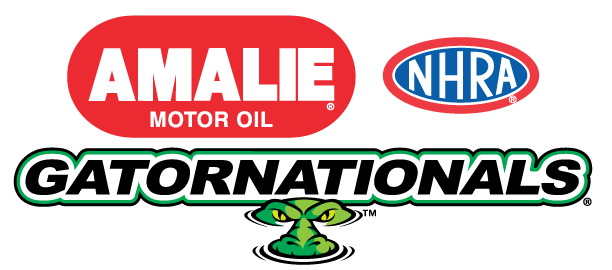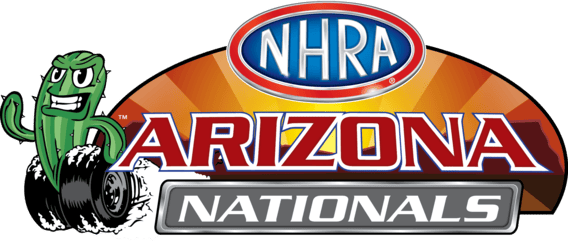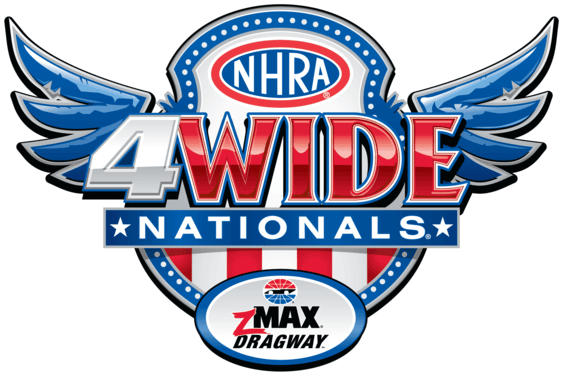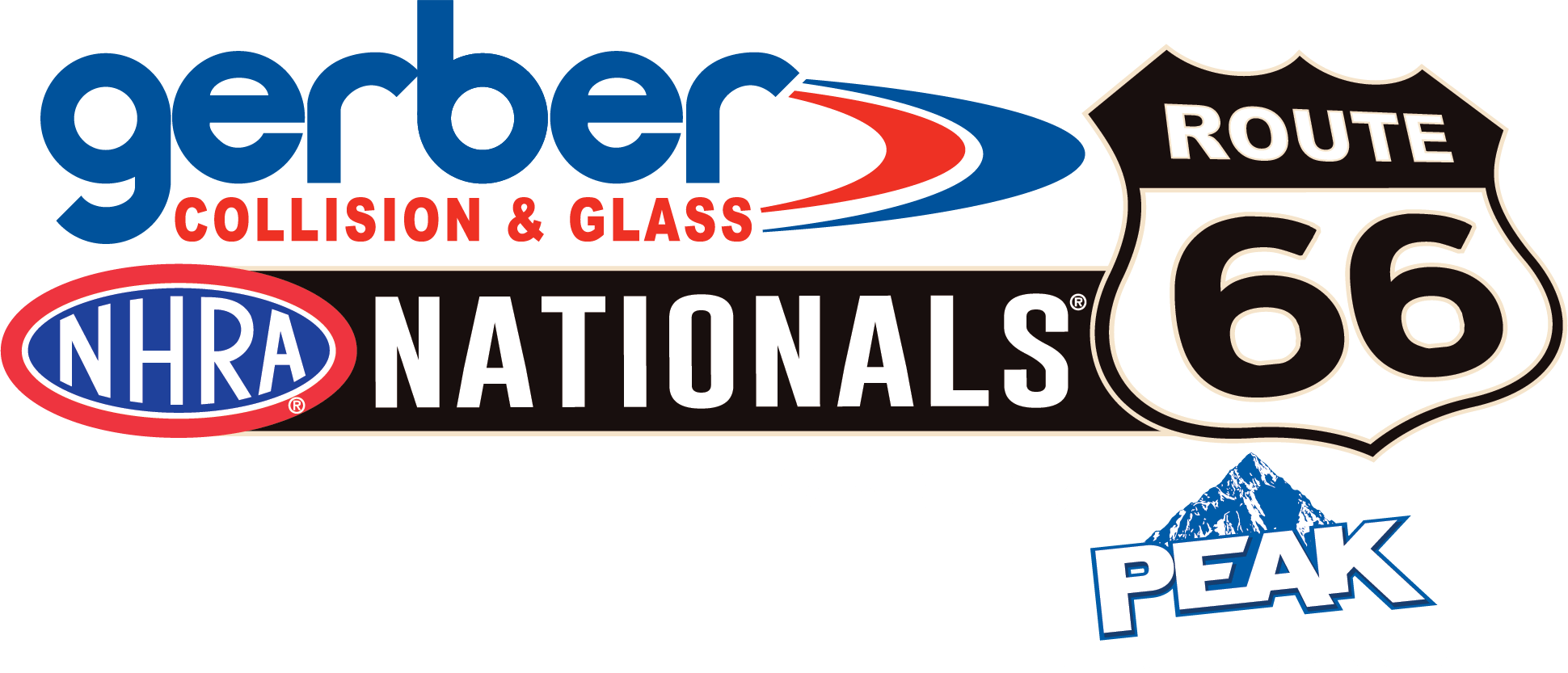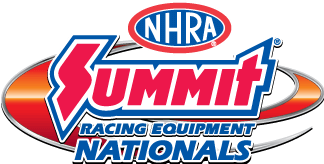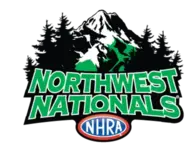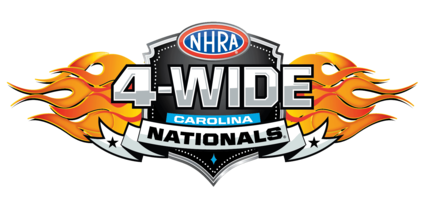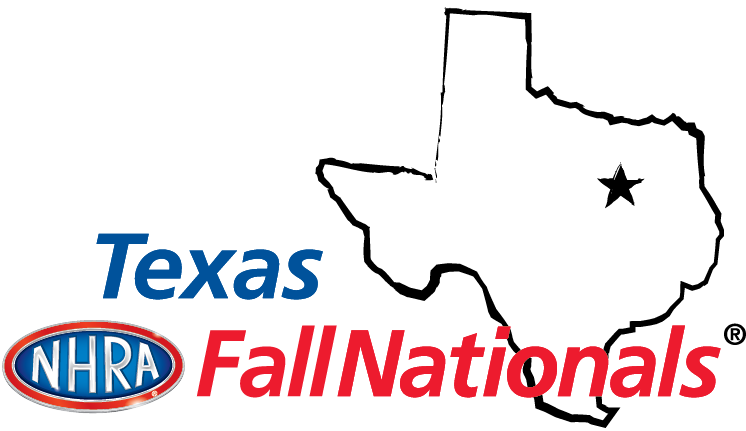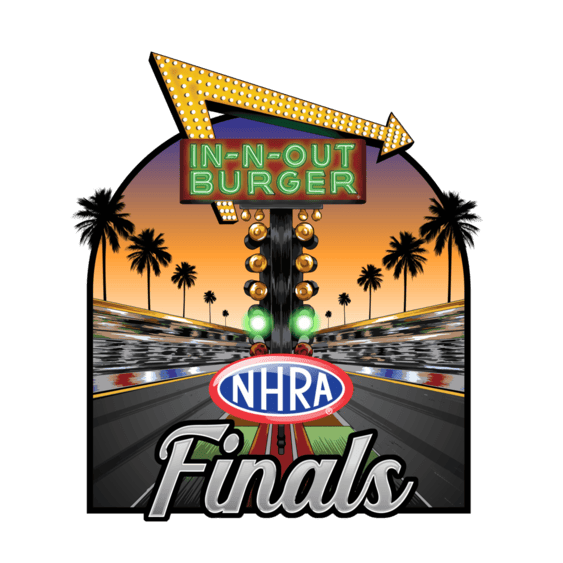4/21: Not just a date, but a legendary 421-cid Pontiac engine that changed drag racing forever!












How did Chevrolet, Ford, Plymouth, and Pontiac make their cars stand out and sell in such a competitive marketplace? Simple, they won races.
One of Detroit’s masters of selling performance was an auto executive named Semon “Bunkie” Knudsen. An engineer by education, Knudsen ran Pontiac, Chevrolet, and Ford during the creation of many of those brands’ most iconic muscle cars. In 1961, Knudsen’s Pontiac was entering a world of 409-cid Chevys, 406-cid Fords, and 413-cid Mopars. He knew Pontiac’s 389-cid engines were going to be outgunned on the track. So right before the 1961 NHRA U.S. Nationals, the following announcement was made:
“Pontiac is now offering to qualified drivers a 421 cubic inch high-performance engine option. The engine is rated at 373 horsepower and features dual four-barrel carburetors, a solid-lifter camshaft, and high-capacity aluminum exhaust manifolds. The 421 engine is available only with related heavy-duty driveline components. It can be fitted to any Catalina or Ventura 2-door model.”
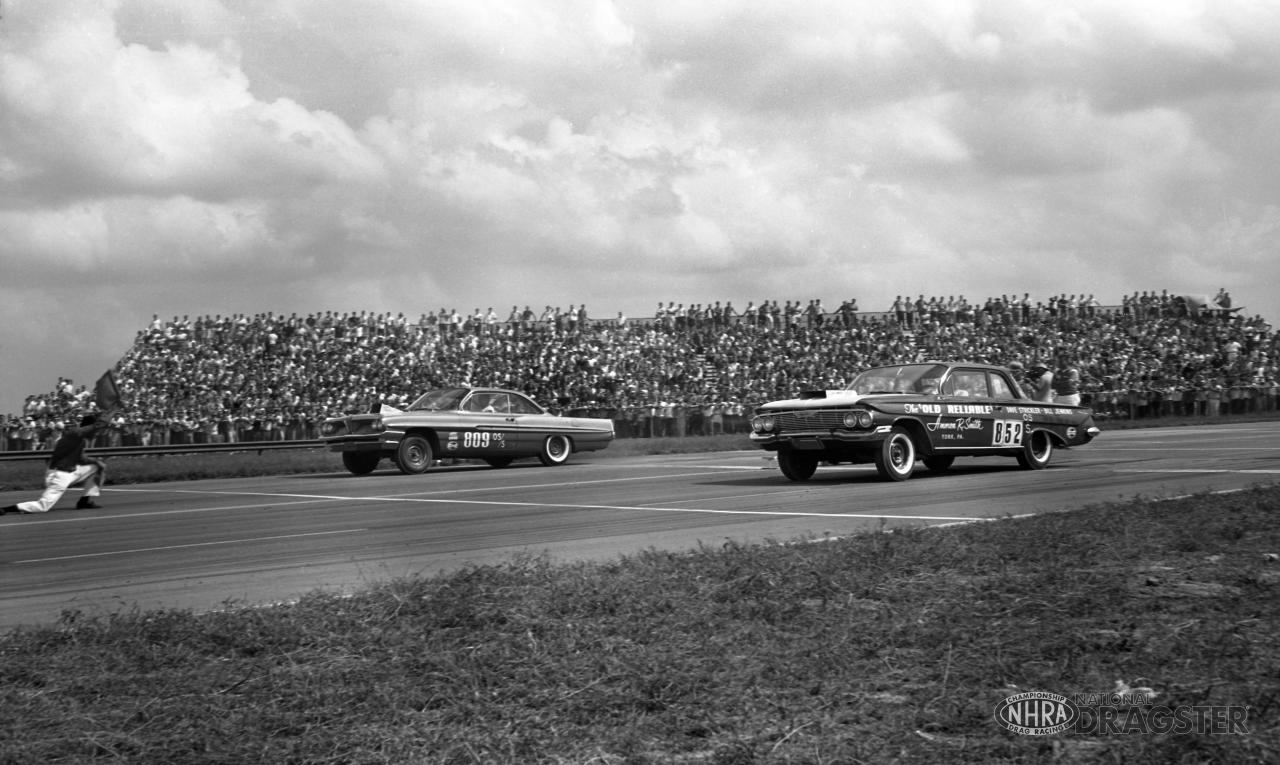
Immediately Pontiac was back on top. It was offering an over-the-counter motorsport weapon system that would come to be known as the 421 Super Duty package. Engine production started in 1961. At first it was a race-only drag car upgrade, but it grew into a complete car for buyers in the know.
It was thought the OS/S class (which in 1962 went on to become the FX class) 1961 Pontiac Catalina built by Mickey Thompson and driven by Hayden Proffitt at the 1961 NHRA U.S. Nationals in Indy (you can watch the 421-cid Pontiac win at 18 minutes and 40 seconds into the footage below) was the first time the world saw the 421-cid Super Duty in competition.
In truth, it seems the Pontiac 421-cid engine ran as early as August 6, 1961, at the Pomona Valley Timing Association (PVTA) as evidenced by this excerpt from the August 25, 1961 issue of National Dragster: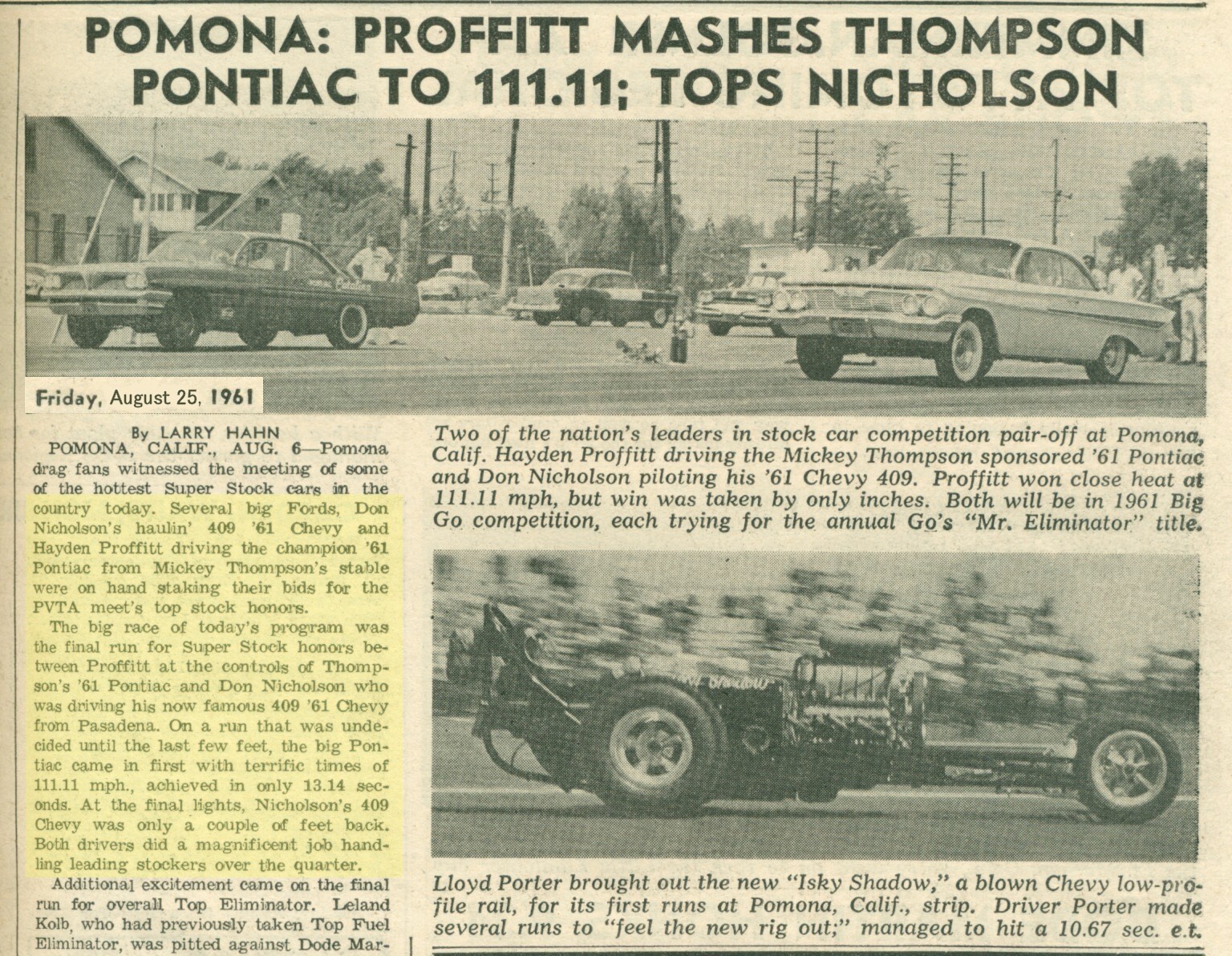
POMONA, CALIF., AUG. 6, 1961—Pomona drag fans witnessed the meeting of some of the hottest Super Stock cars in the country today. Several big Fords, Don Nicholson's haulin' 409 '61 Chevy and Hayden Proffitt driving the champion '61 Pontiac from Mickey Thompson’s stable were on hand staking their bids for the Pomona Valley Timing Associations ( meet's top stock honors.
The big race of today's program was the final run for Super Stock honors between Proffitt at the controls of Thompson's '61 Pontiac and Don Nicholson who was driving his now famous 409 '61 Chevy from Pasadena. On a run that was undecided until the last few feet, the big Pontiac came in first with terrific times of 111.11 mph., achieved in only 13.14 seconds. At the final lights, Nicholson's 409 Chevy was only a couple of feet back. Both drivers did a magnificent job handling leading stockers over the quarter.
While Pontiac rated the 421-cid Super Duty at 405 hp, Motor Trend tested a 421-cid car in a 1962 article and determined it made 465 hp and 505 lb-ft at the flywheel. A confidential internal memo dated September 11, 1962, from Vince Piggins (Chevrolet’s head of Economy, Safety and Performance Department) to Zora Arkus Duntov (and others) said the “Pontiac 421 cu. in. engine for 1963 is reported to be putting out 500 ft-lbs torque at 4,200 rpm and 468 hp at 5,800 rpm [with] single 4-bbl carburation. Smokey [Yunick] verifies the 40hp increase has been made for 1963.”
The 421-cid Super Duty engine came with twin Carter 500cfm carbs and an aluminum intake manifold. Aluminum exhaust manifolds were optional but were known to melt under intense hot lapping. Smokey Yunick reported the aluminum manifolds were done after 10 laps on a NASCAR track.
60 years later, the 809 car driven by Hayden Proffitt at the U.S. Nationals has resurfaced and is in the hands of Robert E George of North Carolina. He knew it was a Mickey Thompson car because the original registration was in the car.
Note the date on the registration, yup, it's today—April 21, 1961. How appropriate.
And here's the 809 Pontiac that won the 1961 U.S Nationals when it rediscovered by Mr.George in Hickory North Carolina in 2013.




